Tiananmen Square
This is the central site for much of China's recent political history. On the south end is the Mao mausoleum (built against his wishes - see below); on the north end is the massive gate that leads to the Forbidden City (where the famous Mao portrait still sits); on the west side is the Great Hall of the People, the massive congress building; and on the east is the Chinese Revolution Museum and the Chinese History Museum. Except the old gate, these are all Soviet-era architecture with a slight Chinese flavor. In the center of the square is the Monument to the People's Heroes. Hopefully, these pictures capture some of the awesome scale of the place.
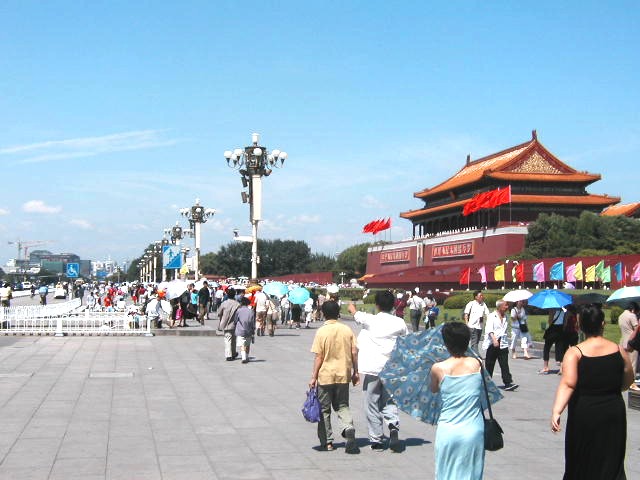
At the north end of the square, approaching the gate with the Mao portrait.
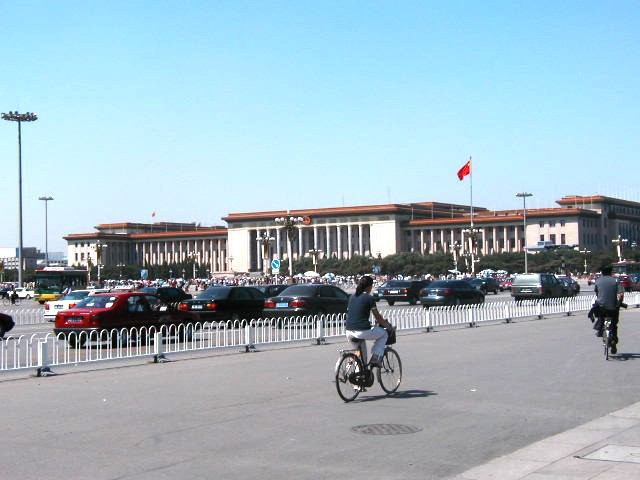
The Great Hall of the People.
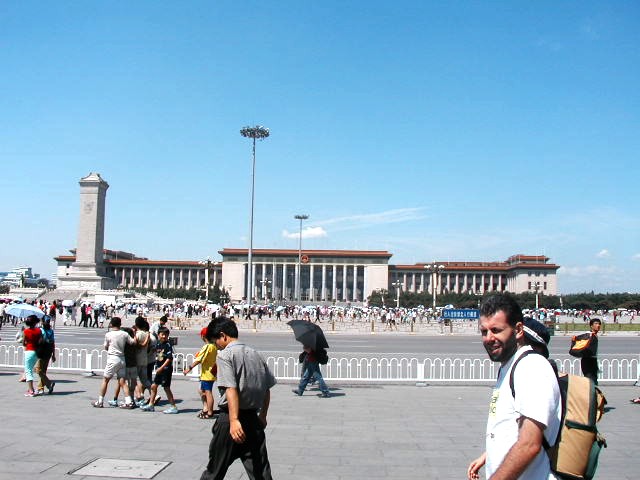
The Great Hall of the People from across the square, with the Monument to the People's Heroes on the left.
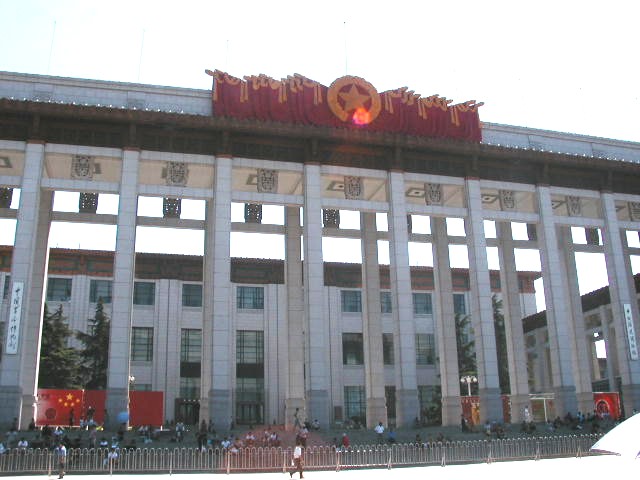
The museum building (the revolutionary history museum was closed for renovation).
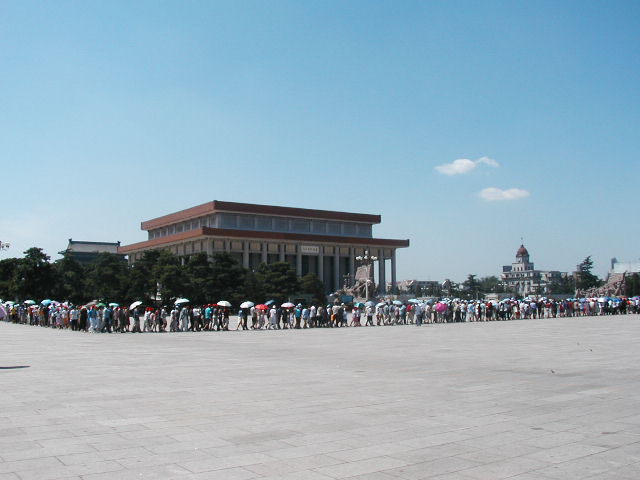
The Mao Mausoleum, with the line of people waiting to file past his preserved body. In 1956, when Mao was the first to sign "A Proposal that all Central Leaders be Cremated after Death," he said: "To chant 'Long live!' is to contradict natural laws. Everyone has to die sooner or later, whether they be killed by germs, crushed by a collapsing house, or blown to smithereens by an atom bomb. Anyway, one way or another everyone ends up dead. After people die they shouldn't be allowed to occupy any more space. They should be cremated. I'll take the lead. We should all be burnt after we die, turned into ashes and used for fertilizer." We did not go inside.

Behind the mausoleum, the old south gate to the square.